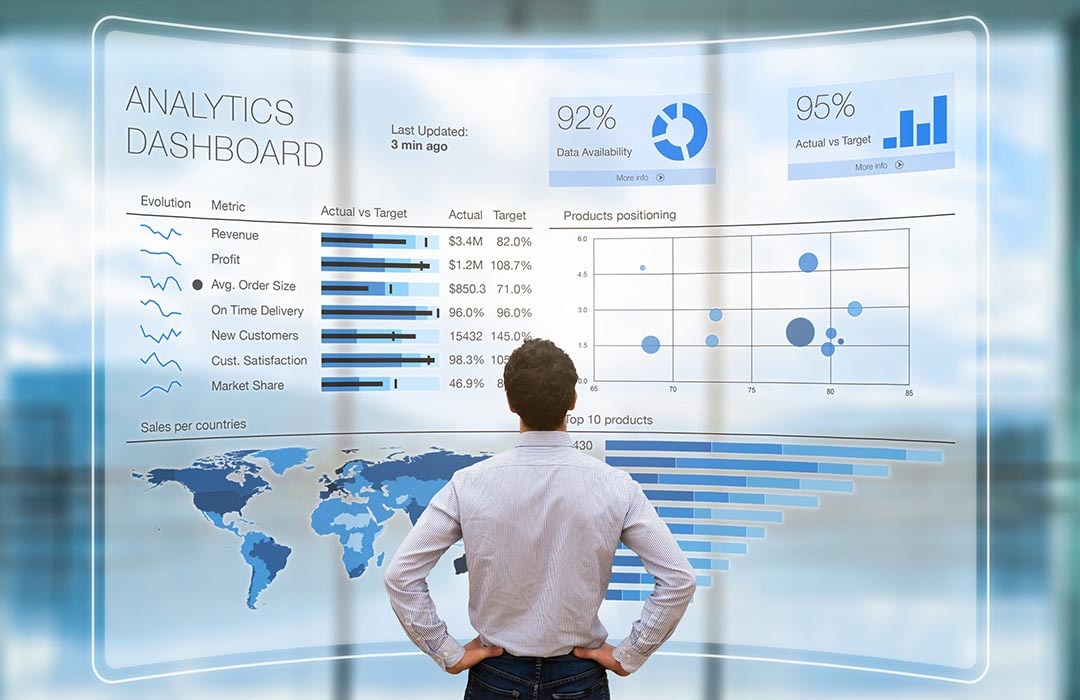
Software SolutionWritten By: Suman Kumar Paul
What is Business Intelligence?
Business intelligence (BI) is the procedural and technical framework that gathers, stores, and evaluates data generated by a firm's operations. It is a wide terminology that includes data mining, process analysis, performance benchmarking, and descriptive analytics. Moreover, it analyzes business data and generates comprehensive reports, performance evaluations, and patterns that help management make decisions.
Business Intelligence Techniques
Business intelligence solutions employ advanced and predictive analytics to assist firms in generating insights from data, discovering similarities, and forecasting future occurrences in business operations. Business intelligence reporting is not a one-time event; rather, it is a continual, complex process of data access, interpretation, and information exchange.
Modern Business Intelligence Functions Include:
• Data Preparation - Process of integrating and organizing data for evaluation
• Benchmarking - Comparing existing business processes and performance assessments to balance industry trends and effectiveness
• Data Mining - Analyzes massive datasets combining databases, statistics, and machine learning to detect patterns and establish relations
• Querying - A request from a database for specified information or data
• Reporting - Exchanging operational and financial analysis of data with decision-makers so they may develop results and make decisions
• Descriptive Analytics - Analysis of historical data to make comparisons and effectively comprehend improvements inside a business
• Data Visualization - Offers graphical representations of data, such as graphs and charts, to facilitate data analysis
• Statistical Analysis - Analyzing statistical and mathematical findings and employing figures to discover trends
Business Intelligence Tools
With extensive data detection mechanisms, methodologies, procedures, and interfaces. Advanced business intelligence solutions promote self-assessment, helping firms to obtain marketplace insights and enhance performance.
Some business intelligence tools include:
• Online Analytical Processing (OLAP) – A type of computation that permits multi-dimensional analytical queries
• Open Source BI (OSBI) – Software solutions for business intelligence that do not demand the procurement of a software license
• Ad hoc Analytics – An assessment technique aiming to provide immediate solutions to specific queries
• Mobile BI – Software that streamlines business intelligence for mobile devices
• Operational BI – A data analysis methodology that uses real-time business analytics to dynamically integrate data into operational systems for instantaneous results
• Data Visualization Software – Provides graphical context to facilitate spotting patterns and data relationships
• Location Intelligence (LI) – Software that connects geographic surroundings to business data
• Software-As-A-Service BI (SaaS BI) – A subscription-based cloud-hosted delivery approach for business analytics technology solutions
• Real-Time BI – A data analytics technique that feeds business activities into a real-time data warehouse to provide users with real facts
• Collaborative BI – Combination of business intelligence tools with interactive technologies to improve the efficiency of information sharing
How does Business Intelligence work?
Business intelligence covers four important steps to turn raw information into convenient insights for everyone in the business. The first three steps—data gathering, analysis, and visualization— sets the foundation for the ultimate decision process. Earlier businesses had to perform most of their evaluation manually, whereas now BI technologies help them in automating most of the procedures reducing physical workloads.
1st Step – Collect and process data from a variety of sources
2nd Step – Discover trends and discrepancies
3rd Step - Use data visualization to generate results
4th Step - Take immediate action based on findings
How Business Intelligence is beneficial for businesses?
As business intelligence tools accelerate information analysis and performance assessment, they are effective in assisting businesses in reducing inefficiencies, identifying possible challenges, and discovering new earnings channels, and areas of future development.
Some of the specific advantages that businesses gain from implementing BI are as follows:
• Enhanced operational process efficiency
• Understanding client behavior and purchasing habits
• Accurate sales, marketing, and financial performance tracking
• Benchmarks that are based on historical and current data
• Real-time notifications to address data irregularities and consumer difficulties
• Real-time report distribution across departments
Previously, data analysts and IT users were the primary users of business intelligence solutions. But now it is open to everyone, from CEOs to operational staff, thanks to self-service BI systems.
VTPL has pushed the boundaries of performance and flexibility in big data analytics, providing a comprehensive machine learning infrastructure that can significantly enhance new analytics applications as well as traditional business intelligence, data visualization, and GIS tools.
We deploy virtual technologies to speed up a wide range of data visualization and business intelligence tools by processing queries quicker than conventional analytics systems.
TAGS - artificial intelligence business intelligence data security service
See Also - Cloud - The Future of Online Backup